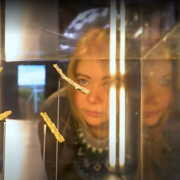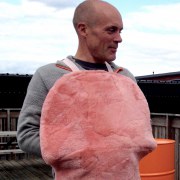Prototyping and user tests: do's and don'ts
Prototyping is an eye-opening and often essential step in the development of content and interactive exhibits. It is a powerful tool but also complicated, often time-consuming and expensive. In the short introduction to this workshop, each speaker will share experiences on how to: start a prototyping project; actively involve visitors in the development process; use prototyping at different stages of a project; improve efficiency with the help of a prototyping tool; learn from spectacular prototyping fails; use prototyping for other purposes.
Workshop participants will then choose a topic they wish to examine more deeply and, in small groups, complete a prototyping task (with real prototypes!). We will end the session with a discussion aimed at creating a shared list of do’s, don’ts and best practices in prototyping.
Session speakers
Concept and exhibition developer
Everybody should prototype! There is a lot of reasons why we prototype! It helps to:
save time and money, refine our concept, understand our problems, understand our audience, get feedback quickly, get started quickly - and more iterations make a better product.
In Experimentarium's development processes, it is essential for our exhibition's product, concept, interaction design, time and economy, that we go through a range of valid prototype sessions. All for the benefit of our audience and development- and production processes in general. It’s rare that any new idea can go straight from the brain and directly to the audience without user testing our narrative, design, interactive prototypes etc.
A prototype could be an interactive sketch in card boards - or an almost finished part of an exhibit product. Prototyping often starts in a simple scale, moving forward and adding elements from previous testing in-house or with an audience. One of the primary goals is often to acknowledge that we sometimes forget that we can’t think of everything. That’s why we must learn to love failing….
Interactive Exhibit Developer - Science Show Performer
In developing interactive exhibits (and exhibitions) developers, evaluators, prototype makers/builders do their best to let the visitor make a great experience!
However, can visitors be direclty engaged in an (exhibit) developing process?
How can we let them BE really active in this process?
In the session I will share with you some ideas we are developing at the Technorama to involve actively the visitors in the prototyping process and how we collect their feedback
Aren't we lucky to have our customers in the house? Testing the results of our work with visitors is a great way to make fast progress with good ideas and painful "come back to earth" with those that are poor. Our experience shows that the process of simple prototyping combined with tests on the floor may also be a powerful tool for working with teachers and educators on home-made teaching aids development. Let's check what the results are.
Case study: How prototyping shaped Mind your brain!
Prototyping sessions during the development of Mind your brain -exhibition: what, when and how? How investing time in prototyping with public at right phase of exhibition development can save precious time and money. How to get right kind of visitors to the sessions and how to be sure that you got “wrong” ones too. Trying to make decisions from the results, learning for the future.
How to learn from spectacular prototyping fails.
As part of the exhibit development process, it is common practice at the Life Science Centre to test prototypes with visitors. Usually, visitors are quite articulate about why they do or don’t engage with an exhibit prototype. However, the opposite is also true: visitors hate it and can’t or won’t explain why! So where do you go from there? I will present my best practices built on experiences with failed prototypes.
Exhibition Developer - mechanics
Jesper will present a few live examples of prototypes for Experimentarium's new exhibition, The Maritime Observatory. These prototypes helped us to change our focus in the exhibition and clearly proved that some ideas we originally had planned needed to be either altered or completely thrown away.







